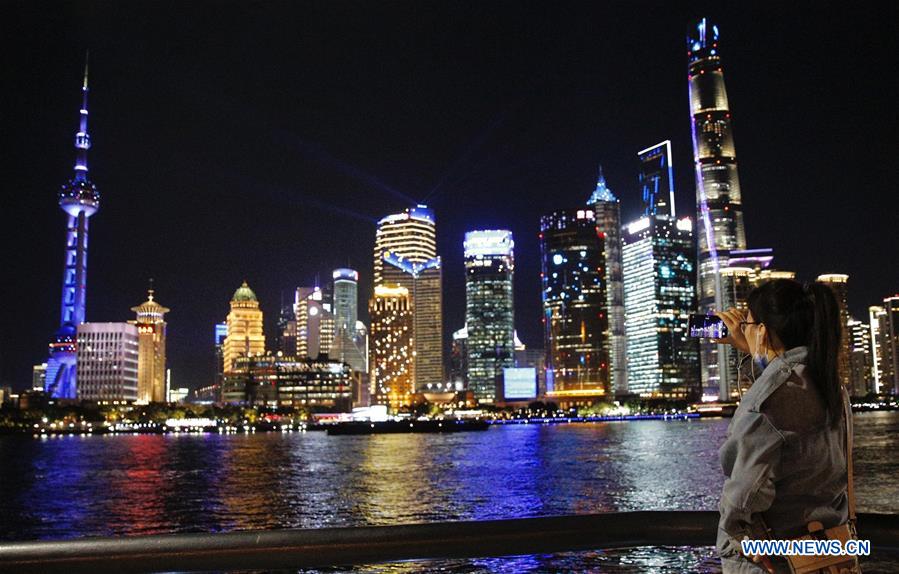Looking deeper – China's 14th Five-Year Plan can be game-changer for our world
- By Thomas W. Pauken II
 0 Comment(s)
0 Comment(s) Print
Print E-mail China Focus, April 13, 2021
E-mail China Focus, April 13, 2021

The China skeptics are hard to please and anything the Chinese government does will be viewed by them in a negative light. According to them, China's rise should be feared, while forecasting China's doom is smart thinking. But what is the real China and how to understand the nation from a more neutral perspective?
The future is more important than the past and that's why China's Central Government, its ruling Communist Party of China (CPC) makes a big splash when announcing its five-year plans to reaffirm its commitment to keep the nation vibrant while adapting to changing geo-political conditions and international business trends. Nothing stays the same.
At this year's annual Two Sessions of the National People's Congress (NPC) and Chinese People's Political Consultative Conference (CPPCC), the Chinese leaders formally introduced China's Five-Year Plan (2021-2025) at the fourth Session of the 13th NPC. A crucial part was headlined, "National Economic & Social Development", as well as the "long-rage objectives through the year 2035", according to China.org.
The strength of China is its economy, but the Chinese believe social stability must play the leading role to maintain the right conditions for peace and prosperity, while the Government serves as the driver to keep the country on the right path. The Chinese government will intervene to prevent boom and bust cycles in a domestic economy and that's not necessarily bad.
China's five-year plans are strategic in purpose, but this time around the 14th Five-Year Plan added the long-term objectives up to 2035, which demonstrates the visionary mindsets of Chinese President Xi Jinping and the State Council (China's Cabinet).
Nevertheless, many Westerners claiming to be experts on China have overlooked a key understanding of the 14th Five-Year Plan. They speak about President Xi's "hold on power", reforms to upgrade and modernize the PLA (People's Liberation Army) and the growing influence of Chinese diplomats. Many opportunities do abound if foreign sovereign governments and enterprises choose collaboration with the good people of China.
Hence, Chinese officials proposing Dual Circulation, in which the domestic economy is the mainstay, while the foreign and domestic markets boost each other, can be viewed as a transitional moment for the country. But how so? We have to understand the terms. We can use an allegory to comprehend it better.
Dual Circulation is like a healthy bird in flight. The domestic economy is represented as the body of the bird, while the bird's wings are the foreign and domestic markets that keep the bird balanced when flying. But there's a deeper message to Dual Circulation that many so-called experts have overlooked.
Dual Circulation can connote two different strategies for China. Beijing has praised globalism and promoting free trade agreements, such as the RCEP (Regional Comprehensive Economic Partnership) with ASEAN (Association of Southeast Asian Nations), China, South Korea, Japan, Australia and New Zealand and China-EU CAI (Comprehensive Agreement on Investments).
China stands tall as the world's largest manufacturer and exporter. The globalism movement with support from the World Trade Organization, and many nations that have long embraced cross-border trade and investments with China. But the political climate can change and we are witnessing the rising trade protectionism, populism and anti-China attitudes from a number of nation states. A day could happen when more sovereign governments choose to back away from China and consider decoupling their markets to punish Beijing.
We all hope such a day never arises but Washington continues to lash out at China even though Donald J. Trump is no longer in the White House. The Biden administration is following in Trump's footsteps in regards to its China policy and there's no eagerness among the Washington Beltway Establishment to shift gears and find ways to cooperate with Beijing.
Dual Circulation addresses that potential challenges. The Chinese government has boosted China's consumption and services sectors. Should China's manufacturers face restrictions on exports they can sell their goods and services to the domestic markets. China's consumption will lead to a surge in imports and as a result other foreign markets will score higher revenues and profit streams selling to Chinese consumers.
For the time-being, the U.S. market has been most attractive to global manufacturers and exporters but as China's economy remains resilient – exporters will see greater success tapping into the Chinese market. Meanwhile, the US economy no longer seems as strong as it was in its former glory days. The US is fading and there's no turning back.
Washington may threaten to punch ahead on decoupling from China but Biden lacks the courage and fortitude to make good on that. Besides, Dual Circulation is Beijing's back-up plan just in case the US and other nations choose to march ahead on attempting to isolate China on the world stage. Chinese consumers can come to the rescue for China's manufacturers.
China's 14th Five-Year Plan is forward-thinking. Chinese citizens know they have a bright future ahead. The rest of the world can join them on the path to peace and prosperity. China's rise will continue on, whether or not other nations march with them, hand-in-hand.
Thomas W. Pauken II is author of U.S. vs. China: From Trade Wars to Reciprocal Deal, geo-political analyst on Asia-Pacific affairs, based in Beijing.






Go to Forum >>0 Comment(s)